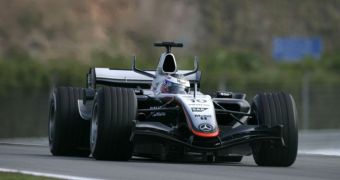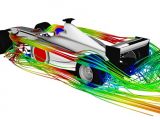Many car enthusiasts or Formula One fans around the world have heard the statement: 'A Formula 1 car can drive upside down without falling.'
Is it true? And if yes, how do they do it?
If you thought abound the car's aerodynamics, you were right, but let's see exactly what are the equipments and the conditions to make this happen.
First, let's take a look at a plane. The wing of an airplane produces lifting force. Lifting is a mechanical force generated by a solid object moving through a fluid. The shape of the wing directs the airflow so that the air moving over the top of the wing is moving faster, thus creating an area of lower pressure than the one beneath.
The pressure difference lifts the airplane off the ground when a certain speed is reached, and that depends on the propulsion system and wing finetuning.
F1 cars have two aerodynamic wings, one in the front and one in the back. The only difference is that they look exactly like an upside down airplane wing. So, instead of generating lift, they generate downforce, that sticks the car to the ground.
Many minimum speeds are reported throughout the Internet, some saying that the car must reach 200 km/h to be able to stick a ceiling, when in fact an F1 car achieves the necessary downforce at 125 km/h to 130 km/h. At 190 km/h the downforce to weight ratio is roughly 2:1.
What most people don't know is that F1 regulations prohibit the use of ground effect elements that act to increase the downforce, so the underside of the vehicle, the undertray, must be flat between the axles. Thus, the car relies only on its two deflector wings and small winglets on the sides to achieve this effect.
Unfortunately, so far no real test has been performed to prove the efficacy of this effect, or at least none has been published.
The ideal environment to do that would be in a perfectly cylindrical tunnel, where the car would start on the ground and very quickly climb the lateral "walls" to get to the "roof." However, in the time it takes the car to get from bottom to top, there would be no downforce to keep it from falling.
So, when the car will be on the "walls", it will surely fall, and this is probably since no one has attempted this so far.

 14 DAY TRIAL //
14 DAY TRIAL // 
